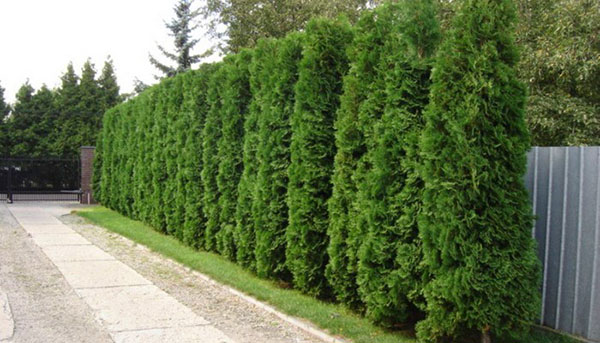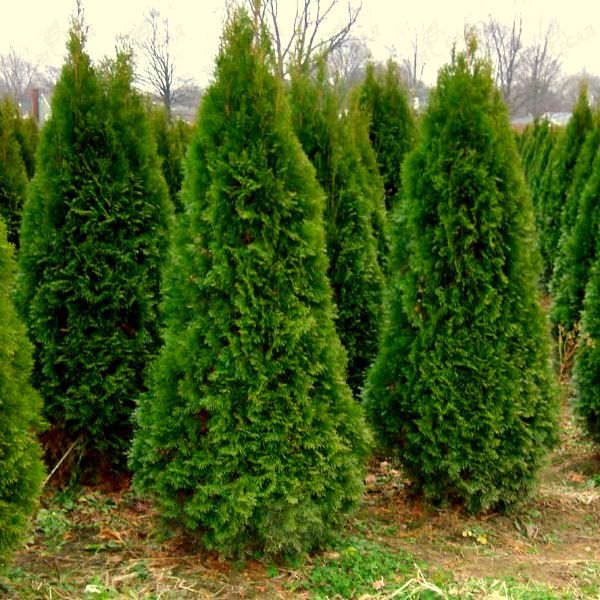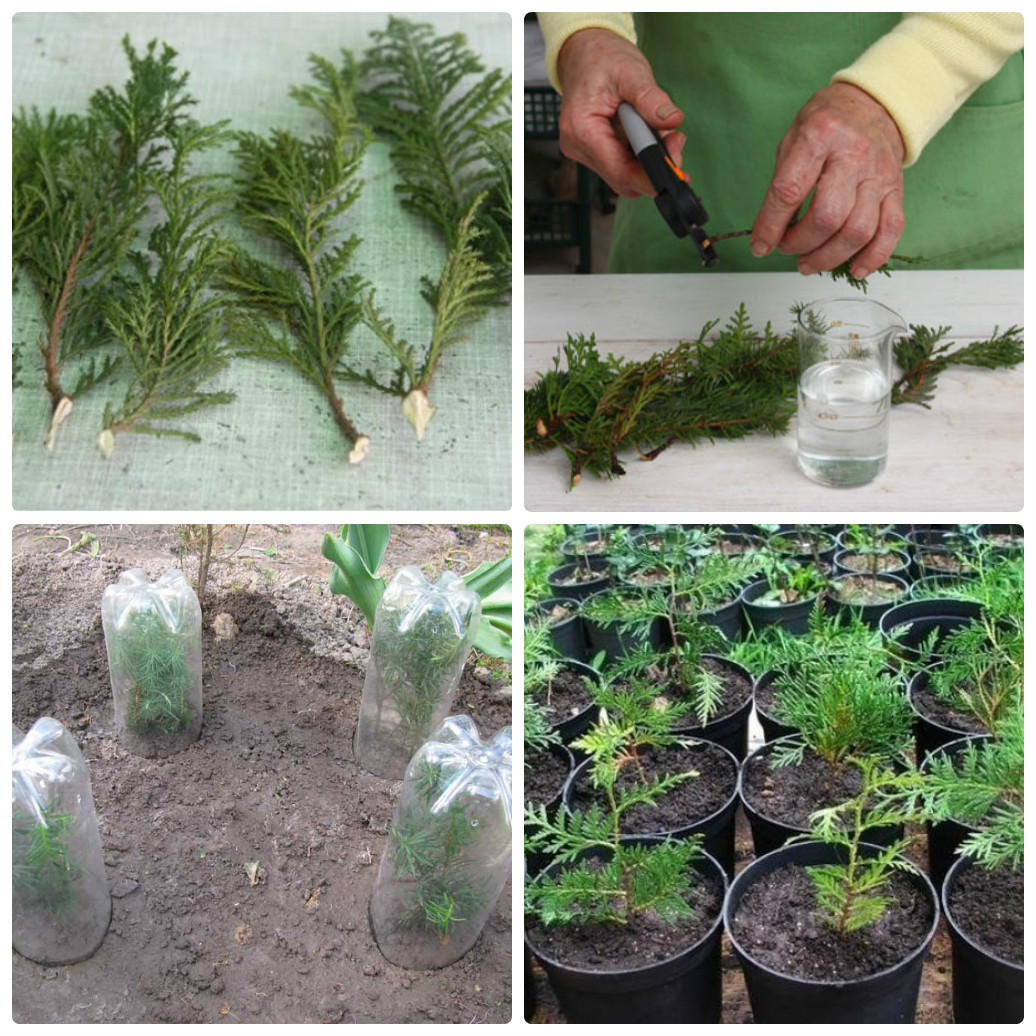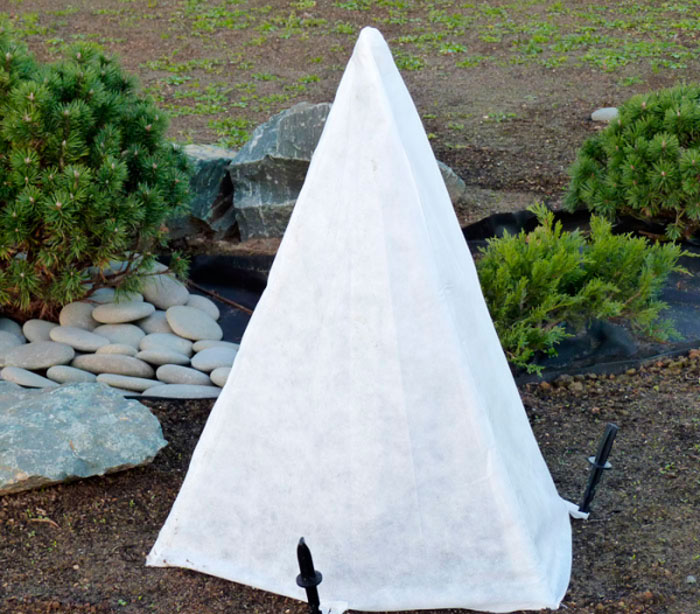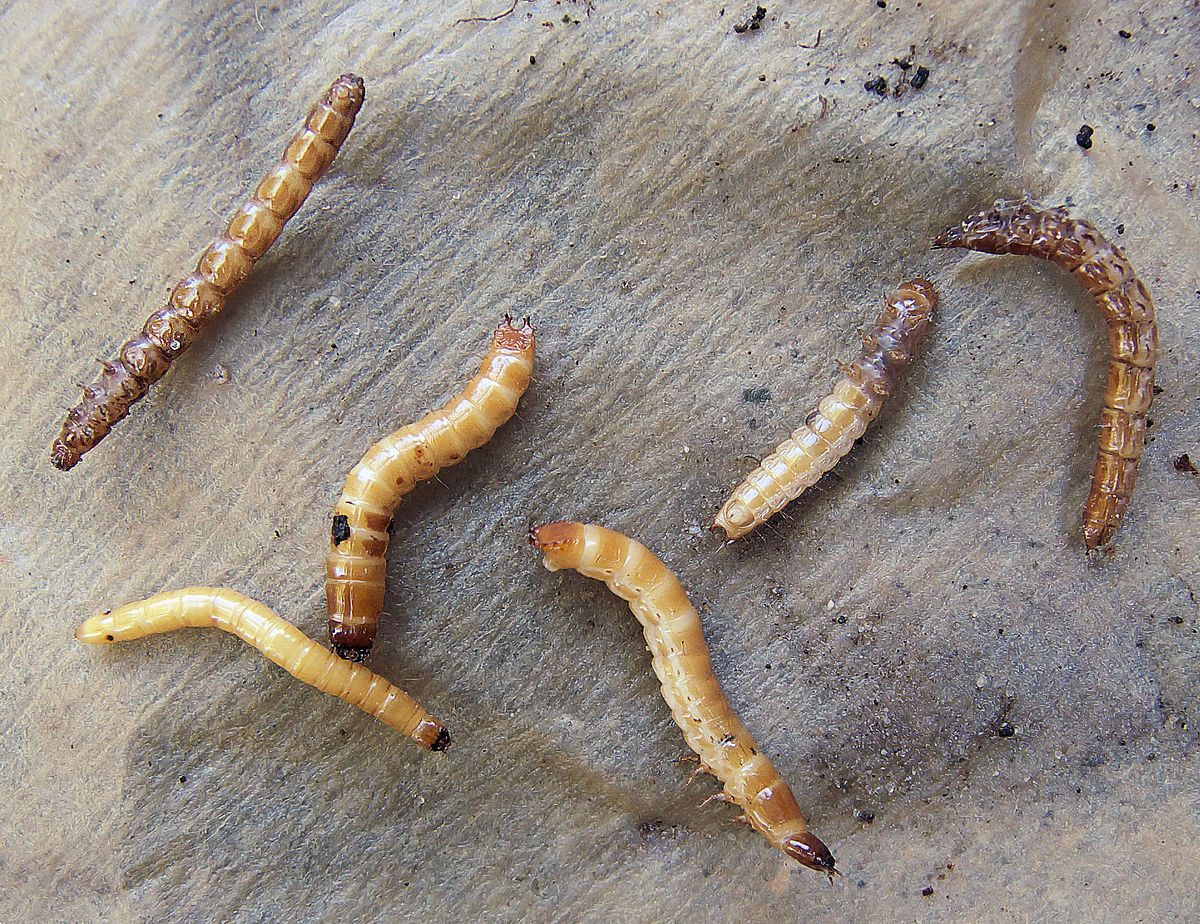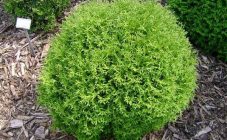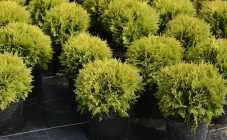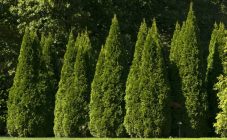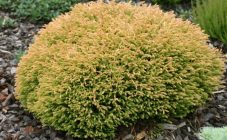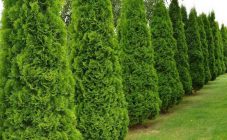Content:
Today thuja are not such rare trees. About 15 years ago, these trees were placed only in a city park or square to decorate buildings. Now these interesting plants can be purchased for a home garden and grown without problems. For home cultivation, nurseries have more than a dozen varieties, depending on different preferences.
Characteristic features of culture
Most often, "western" is added to the traditional name. This is due to the fact that thuja Columna for science in its name includes "occidentalis", which means Western in Latin. The tree legally occupies the first place not only in a public park, square, but also in household plots.
Thuja western Columna attracts attention not only by its external characteristics, but also by its life expectancy. The plant is cone-shaped, growing straight up. It has short branches that grow straight. The minimum life span of a thuja is at least 200 years, which determines its height. Mature trees can be up to 10 meters high, although their average length is no more than 8 meters. The average annual growth of young trees is 15 cm in height. Plants do not differ in the span of the crown, its width is no more than 1.5 meters. For a year, no more than 5 cm is added to the diameter of the crown of a young thuja.
Thuja is characterized by:
- The development of the fruit is brown and has the appearance of round cones. It is also necessary to have two-winged seeds (flat in shape), which appear already in the first year after planting;
- The needles are dark green in color, resembling scales in appearance. The scales are thick, shiny, and do not change their color throughout the year;
- The bark is rough in structure, resembles a brick in color;
- Root system consisting of alternating thin and thick mycorrhizal processes.
Description of the variety, history
In the forests and swampy areas of North America, there is a tree of unusual length, which the locals are used to calling the white cedar. There, such wood is used for the construction of canoes, since it is not capable of rotting for a long time. The bark from such trees has been used for many years to brew tea with medicinal properties.
The tree in question is today usually planted in the plots as decorative. Thuja is a popular tree that the whole world knows about. At home, you can grow at least 6 species, but the western thuja Columna attracts special attention. The name thuja comes from the Greek word thuo, the literal translation of which means to fumigate or sacrifice. This is due to the fact that when the branches are burned, the tree emits a pleasant, sweet aroma, which the ancient peoples used for sacrifice rituals.
The leafy part of thuja contains various essential oils with the strongest camphor oil - it is considered an expensive ingredient for perfumers. Many components of the tree are used for the manufacture of drugs that have a positive effect on the immune system, the central nervous system and the activity of the cardiovascular system.
Thuja spread throughout the world in the 16th century. Around the 30s, the plant was exported from Canada, one of the first of the conifers to appear in France, where it was nicknamed the tree of life. Its popularity is due to the ease of cutting, which made it possible to make a living sculpture out of it.
Thuja Columna, the description of which was presented above, is the only representative of the species that can grow up to 10 meters in height. The tree was distinguished and still differs by its interesting narrow vertical shape. The variety is columnar, strong growth is its main characteristic. Thuja loves the sun or partial shade. When located in sunny areas, you can observe the compaction and increase in the brightness of the crown. In shady areas, the crown becomes a little less common.
Features of agricultural technology
For the full and rapid growth of thuja, special attention should be paid to agricultural technology. It is necessary to follow the rules not only regarding care, but also planting, otherwise the plant will simply die. There are 2 known ways to grow thuja:
- planting seedlings;
- planting seeds.
At the same time, not all gardeners have enough strength and patience to grow a tree by planting a seed, since the whole process is laborious and complex, although quite cheap in material terms. It will take at least 2 years to germinate a tree from seeds; some specimens can grow up to 5 years.
Cones are a valuable seed material. After collection, they are placed in a warm room until they are fully disclosed. Now you can start soaking the seed in plain water and then place it in the ground. It will be great if the planted cones are covered with coniferous sawdust. Trees grown in this way receive immunity, are considered more hardy, and do not differ from others in appearance. This method is not suitable for everyone.
Another good breeding method is to plant already grown trees. You can only plant plants with a root clod of earth. This is a definite guarantee of accurate germination. Such plants take root faster and easier. To plant a young seedling, you need to make a hole that is 2 times the size of the earthen coma. It is best to plant the tree in black soil mixed with peat. Falling asleep the roots, the earth must be tamped and a large amount of water must be added.
When planting a plot with several copies, you should take care of the distance between the plants. The distance between thujas should be at least 2 meters, it is better that such a distance be from 3 to 5 meters.
Culture care
In order for the plant to take root and continue to grow, it is worth providing it with timely and proper care. To do this, you need to take into account the following recommendations:
- Having planted a young tree, for 4 weeks you need to add at least 10 liters of liquid every 7 days. You also need to moisten the soil as it dries;
- With sufficient fertilization of the land during planting, the next top dressing should be applied in a year. Then mineral fertilizers are applied once a year, in spring, at the rate of 100 grams. fertilizers per square meter of land;
- Thuja has superficial roots. This must be taken into account when loosening the soil. With regular carrying out of such a procedure, you should not go deeper than 10 cm in depth;
- For the purpose of mulching, you can use flail and peat. The mulch layer should be at least 7 cm;
- To rejuvenate trees, pruning dry branches should be carried out annually. When forming a hedge, you should not cut more than 1/3 of the branch;
- The crown should be cut without reference to the season and period. Such pruning can be carried out when the length of the branches indicates the need for a procedure;
- For the first time after planting, the plants should be covered to keep them from frost. Mature trees are immune to cold weather, and there is no need for shelter.
Diseases and pests
Columna is an evergreen tree that easily tolerates frost and heavy air. However, it can suffer from the attack of various pests. Crop pests include:
- Thuvaya aphid. Yellowed and fallen needles, deterioration of appearance speak about its presence. Insects are gray-brown in color. The bottom of the shoot is most often affected. To combat them, use a spray solution - karbofos;
- Thuvaya speckled moth. It is butterflies, the size of which is no more than 4 mm.The peak of the appearance of the pest is the beginning of summer. Affected trees begin to die off from the tops of the shoots; the top of the tree becomes brown. To kill a mole, you need to use pyrethroid drugs. Processing is best done starting at the end of June and continuing several more times with an interval of 7 days;
- The false shield is a yellow-brown insect, 3 mm in size. Insect larvae are able to hibernate, climbing under the bark of young trees. To combat parasites, karbofos or actellic are used. The fight against insects begins before the appearance of the first buds, when all the pests come out en masse;
- Wireworm. Pest larvae start in acidic soil with high humidity. You can get rid of insects by arranging soil drainage, deoxidation and digging up the soil in the fall.
Among the common diseases that Columna undergoes are:
- Phytophthora is the most dangerous fungal disease of a plant. The defeat starts from the root system. Occurs in places where water stagnation occurs in the root zone. Regular watering of plants with a solution of fungicidal preparations will help prevent disease. Drainage should also be provided;
- Brown shoots - appear in early spring. Separate parts of the scales begin to turn yellow. For medicinal purposes, the affected parts of the shoots are cut off. Also, the plant is regularly covered with lime and the root system is fed. From mid-July to early October, spraying should be carried out using a foundation;
- Rust and shute are fungal infections in which the needles fall off and darken. The disease manifests itself in the spring, but can be carried throughout the year. Young plants are most susceptible. To prevent the growth of the fungus, the affected branches are cut and burned. Treatment with fungicides in a proportion of 40 grams also helps. preparation for 10 liters of water. Additionally, you can use Topsin-M, 15 gr. means for 10 liters.
Landscape
Most often, the variety is planted in summer cottages as a hedge, separating from the dirty track. The coniferous plant is saturated with essential oils and is capable of emitting phytoncides that have medicinal properties and an unusual smell. To a greater extent, thuja is considered an ornamental culture that does not depend on the season. Attracted by the possibility of different landing:
- Individual units;
- A group in the form of interesting columnar alleys;
- A hedge from the outside world.
Such a variety in the planting of a coniferous tree is caused by an unusually symmetrical crown, always the same color. In essence, thuja is universal in home use, since the purpose of planting it is to ennoble the site. In addition, we must not forget about the minimum requirements for care and fit, which makes it more in demand.
